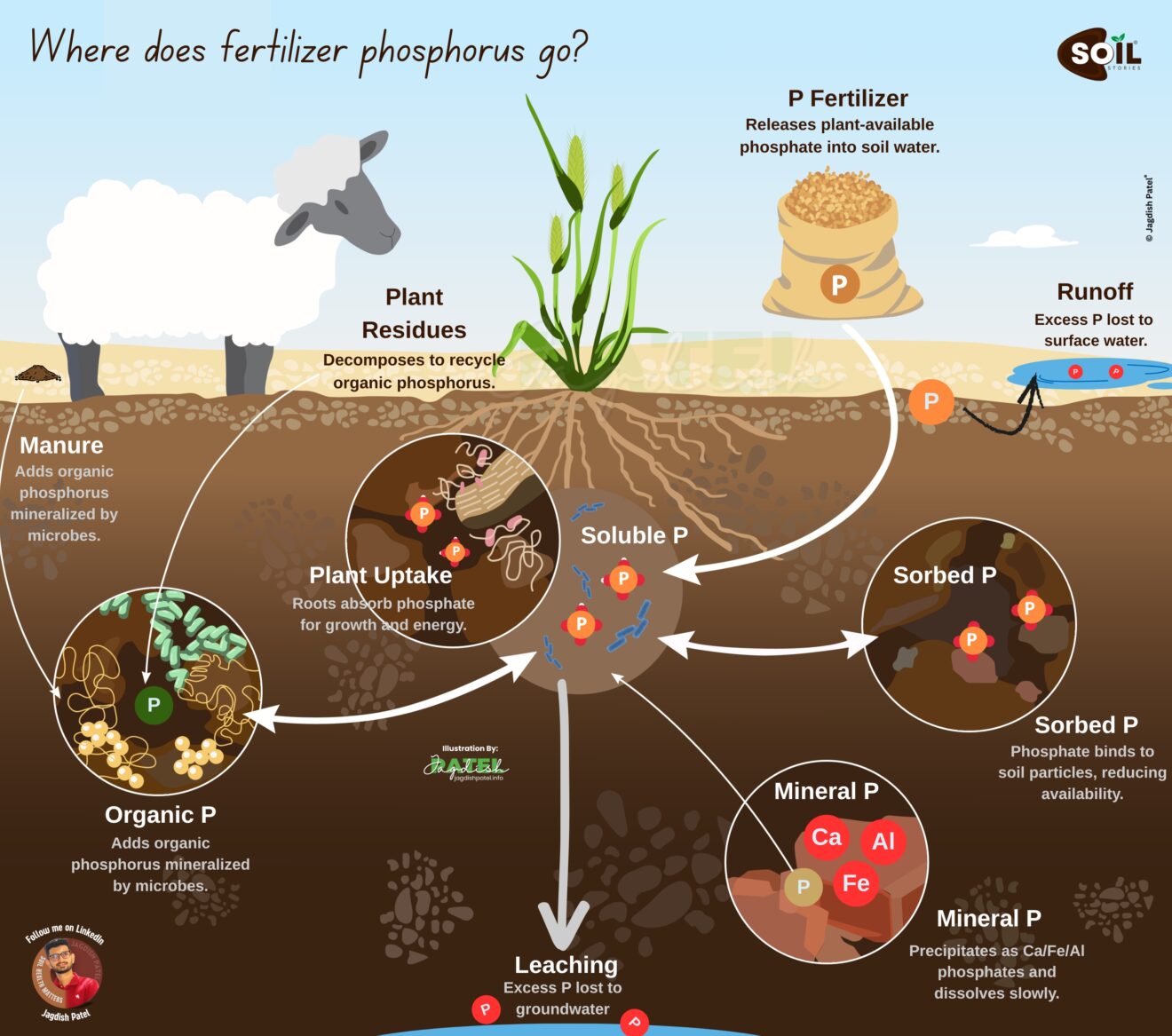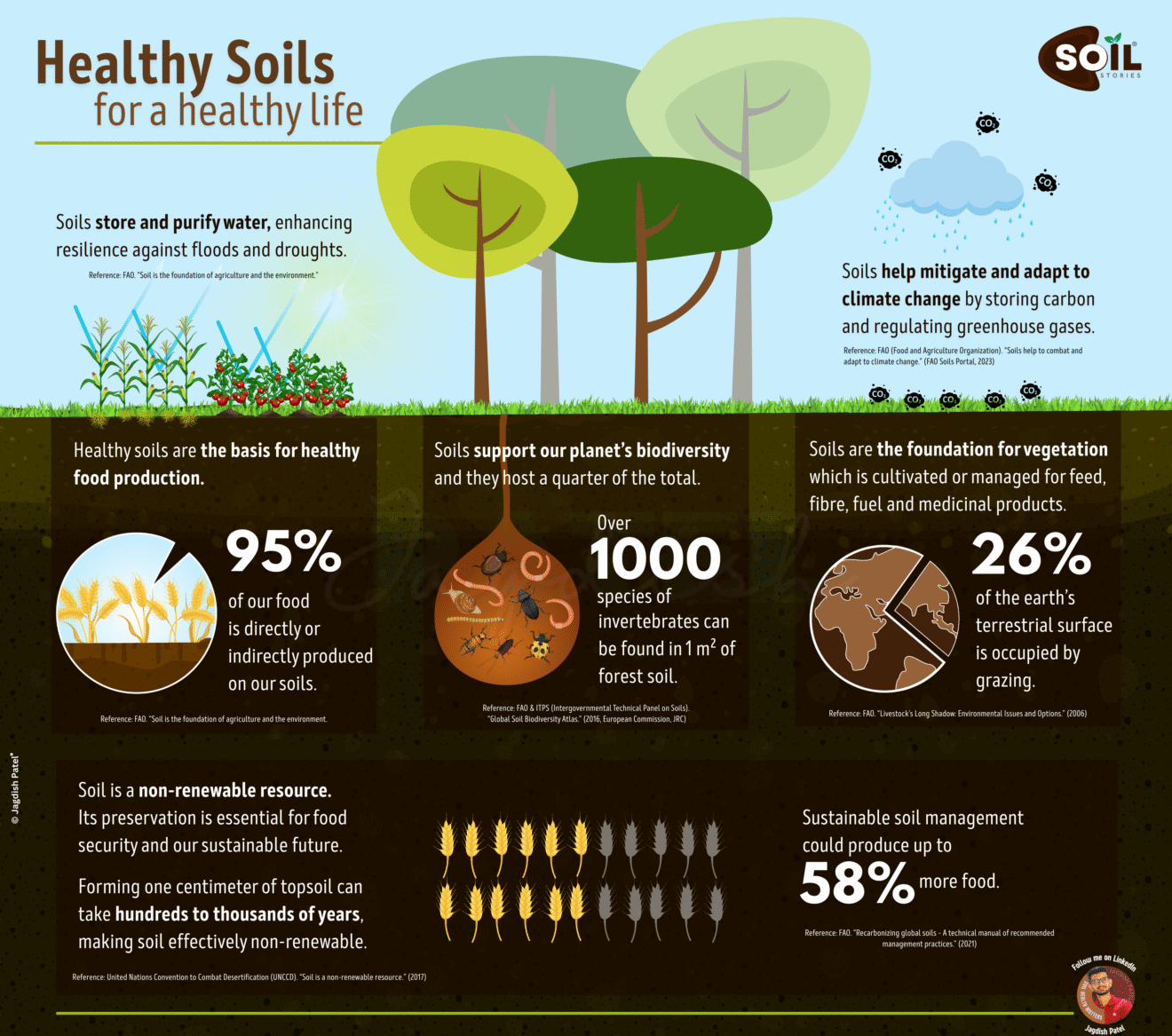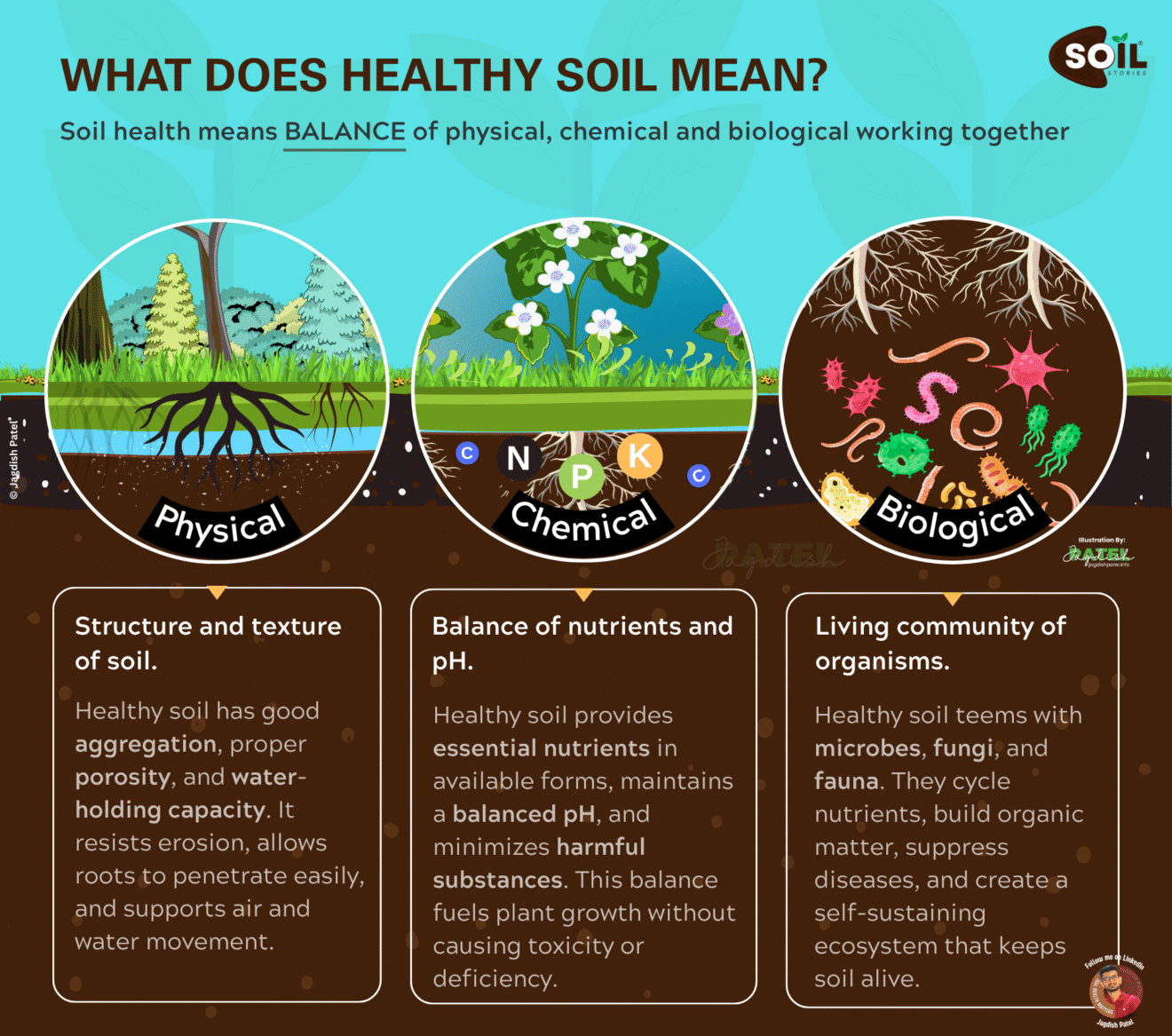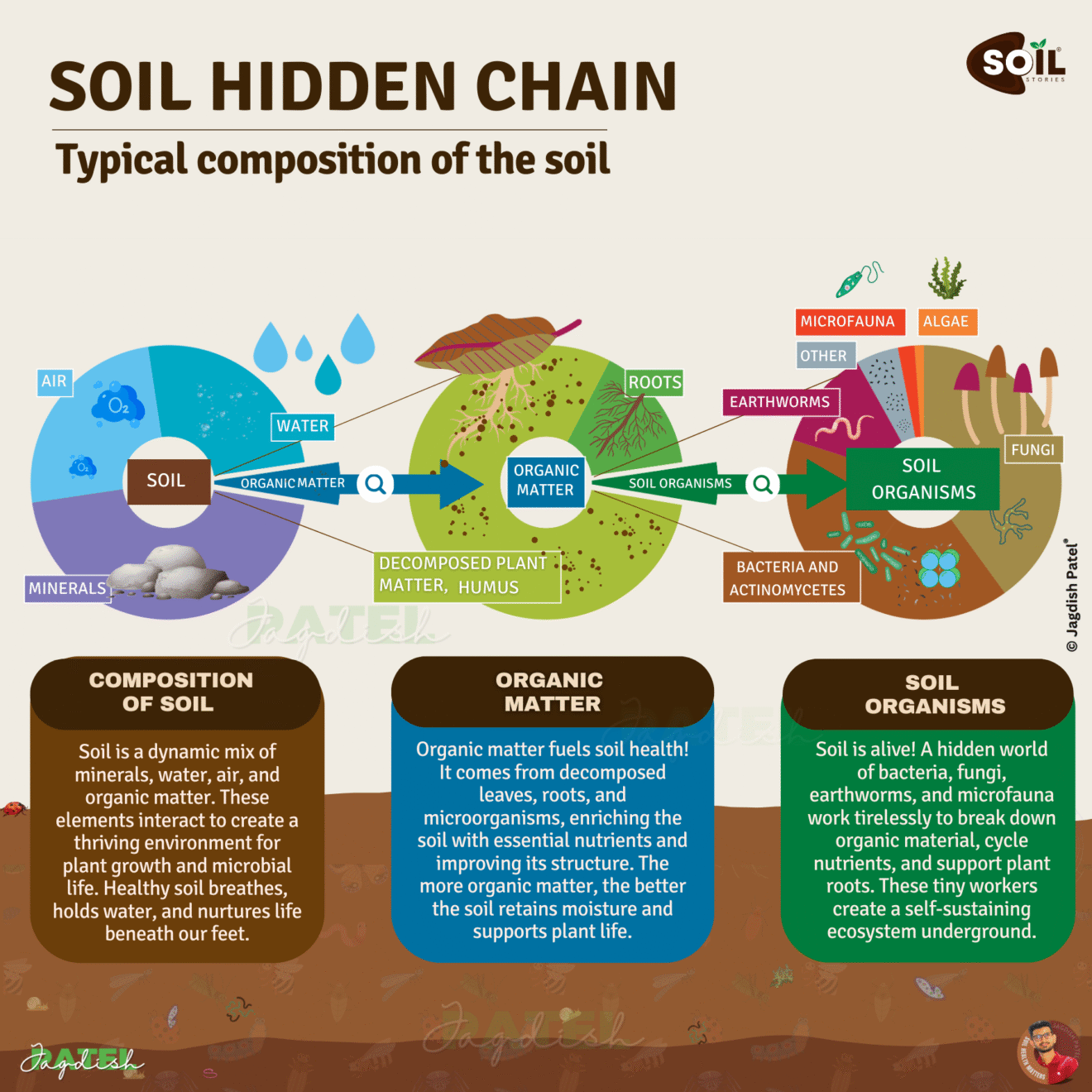In today’s agricultural landscape, the word “organic” is everywhere from food labels to fertilizer bags. But in the rush to go green, we’ve blurred two fundamentally different concepts: organic matter in soil and organic fertilizer.
To the untrained eye, the terms might seem interchangeable. After all, both are associated with nature, sustainability, and better farming. But deep in the soil, they couldn’t be more different. Understanding the role of organic matter in soil is essential for anyone hoping to regenerate land, retain water, and improve long term fertility.
What Is Organic Fertilizer
Organic fertilizer is manufactured, even if it’s derived from natural sources. It delivers nutrients like nitrogen, phosphorus, and potassium. It might come in bottles, bags, pellets, or even liquid seaweed extracts, but it remains a product with set nutrient ratios. It is applied intentionally to get a quick response in crop growth.
Organic fertilizers help plants grow. But they do not help the soil evolve or rebuild.
What Is Organic Matter
Organic matter is not made. It is formed through life, decay, and time. It comes from plant residues, root exudates, microbial cells, fungal hyphae, and decomposed biomass. It is not applied to the soil, it is grown into it.
It results from ecological processes that may take seasons or even decades. Unlike fertilizer, organic matter has no label, no expiry date, and no synthetic replica.
Its importance is deeply tied to what we explore in How Soil Loses Its Memory, where we detail how soil biology collapses when organic matter is missing.
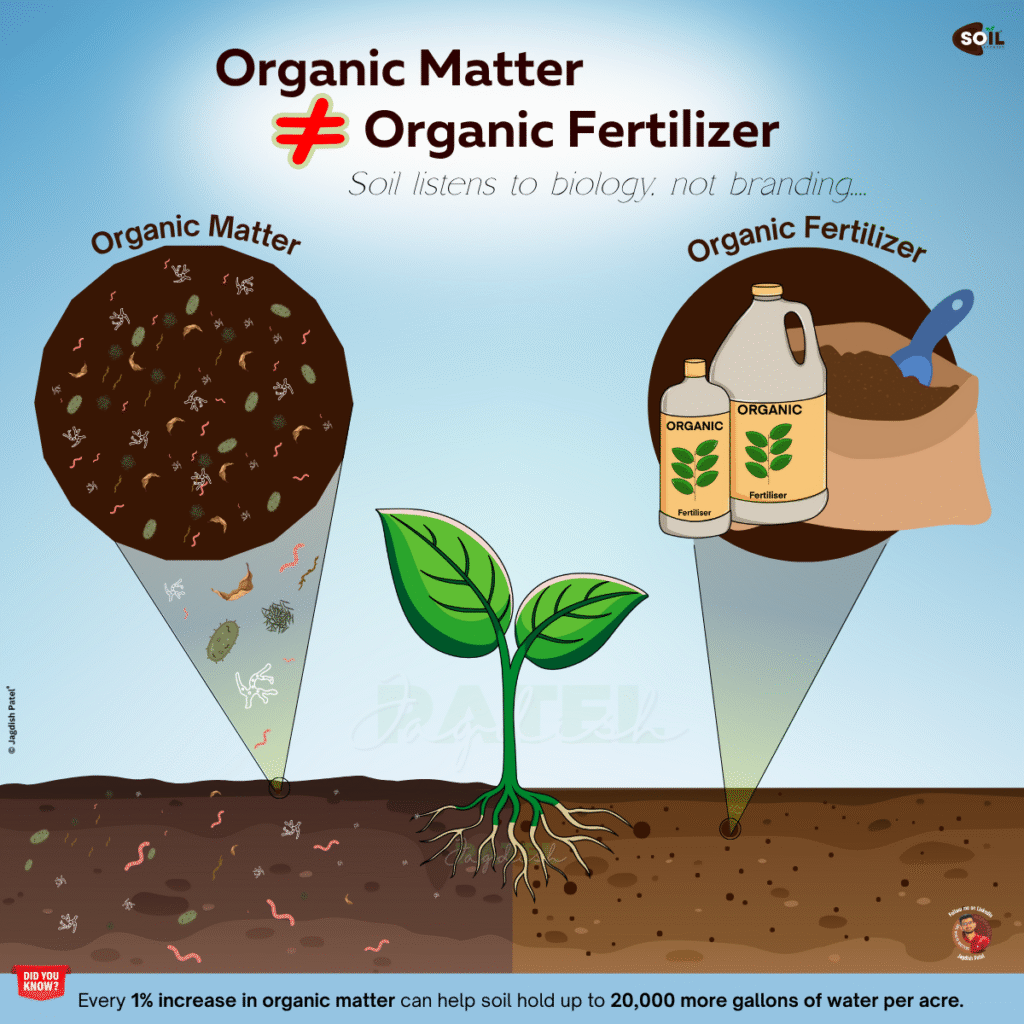
Why the Confusion Matters
Because “organic” sounds natural and sustainable, many farmers believe that applying organic fertilizer is enough to build soil health.
But labels do not fool the soil.
You can add large amounts of organic fertilizer and still end up with degraded, compacted, and lifeless soil if organic matter is missing. Fertilizers, even organic ones, cannot create structure, store long term carbon, or host microbial life the way true organic matter does.
This misunderstanding delays soil recovery. It reinforces a dependency cycle based on inputs, not on regeneration.
Why Organic Matter in Soil Matters More
Organic matter in soil is the engine that drives healthy ecosystems underground. It brings benefits that no product can deliver on its own:
- Increases microbial activity
Soil microbes feed on organic matter. They unlock nutrients, suppress pathogens, and support a living structure in the soil. Learn more in The Soil Food Web: Nature’s Symphony
- Improves soil structure
Healthy organic matter promotes aggregation. This reduces crusting, increases porosity, and prevents erosion.
- Boosts water retention
Every 1 percent increase in soil organic matter can store up to 20,000 gallons more water per acre. This is supported by studies from University of Florida IFAS Extension and Noble Research Institute
- Enhances nutrient holding capacity
Organic matter raises cation exchange capacity, keeping nutrients available to roots over time.
- Builds humus and captures carbon
Humus is the most stable form of organic matter. It can persist for centuries and store up to 58 percent carbon by weight. These values are documented by the Oregon Association of Conservation Districts and in this PubMed study
Organic matter is not just a resource. It is the memory of everything the soil has lived through.
It captures the legacy of roots, microbes, and decay. This memory is what gives soil its resilience.
Organic Fertilizer Is a Tool. Organic Matter Is a Foundation
Organic fertilizers may support plant growth. But they can only be effective when the soil itself is biologically alive.
Without organic matter, even the finest compost becomes a temporary boost.
On the other hand, organic matter builds lasting resilience. Soils that contain sufficient organic matter can:
Self-regulate pH and salt levels
Recover from overuse of chemicals
Grow deeper and healthier root systems
Absorb intense rainfall and survive drought
We explore this principle in more detail in Plant–Soil Synergy: The Missing Link in Soil Health
The Science of Humus
Humus is the most stable and powerful form of organic matter. It is dark, carbon rich, and microbially transformed over time. Unlike compost, which decomposes relatively quickly, humus binds minerals, retains moisture, and locks in carbon.
Research confirms that humus can contain around 58 percent organic carbon. This makes it one of the most important natural tools for fighting climate change and improving crop productivity (OACD, PubMed)
It cannot be manufactured. It must be cultivated by allowing life to decay in place, season after season.
How to Build Organic Matter in Soil
Here are practical ways to restore soil health through organic matter:
• Limit or eliminate tillage
Tilling the soil disrupts microbial life and releases stored carbon. Adopting no-till or strip-till helps soil recover.
• Grow cover crops
Legumes and grasses feed the microbial community even when cash crops are not in season.
• Apply mature compost
Use compost not just for its nutrients but for its ability to increase soil biology and long term carbon.
• Keep residues in the field
Leaving crop stubble, roots, and fallen biomass adds continuous carbon to the system.
• Rotate crops
Crop diversity above ground leads to microbial diversity below.
• Add biology
Use microbial inoculants or compost extracts to seed life into depleted soils. See Root Exudates & Microbes to understand how plants support these organisms naturally.
Final Reflection: Soil Responds to Biology, Not Branding
In the age of green labels and eco claims, it’s easy to assume that anything labeled organic must be regenerative. But nature does not respond to slogans. It responds to biology. If we are serious about soil health, climate action, and food security, we must stop asking what we are applying and start asking what we are cultivating.
Are we feeding the crop, or are we feeding the soil? Because resilience is not something we apply. It is something we grow. Slowly. With roots. With microbes. With patience.
This article is part of our growing knowledge library. Explore more like How Soil Loses Its Memory, The Soil Food Web, and Root Exudates & Microbes

